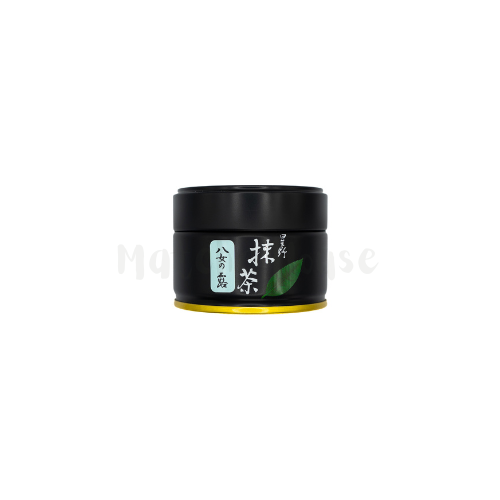What is Matcha: Benefits, Differences, and Craftsmanship 什麼是抹茶:健康、美肌與工藝之美
What is Matcha?
Matcha is a finely ground powder made from shade-grown green tea leaves, known as Tencha, originating in Japan. Unlike regular green tea, where leaves are steeped and discarded, matcha involves consuming the entire leaf, maximizing its nutritional benefits. Traditionally, matcha has been an integral part of Japanese tea ceremonies and is now popular worldwide for its vibrant green color, unique taste, and versatility in culinary applications.
Benefits of Matcha for Health and Skin
-
Health Benefits:
- Rich in Antioxidants: Matcha contains catechins, particularly EGCG (Epigallocatechin gallate), which help combat oxidative stress, reduce inflammation, and support cardiovascular health.
- Boosts Metabolism: EGCG also enhances fat oxidation, aiding in weight management.
- Improves Focus and Calmness: The combination of caffeine and L-theanine in matcha provides a calm but alert state of mind without jitters.
- Supports Detoxification: Chlorophyll in matcha helps detoxify the body by eliminating heavy metals and toxins.
-
Skin Benefits:
- Anti-Aging: Antioxidants in matcha protect the skin from free radical damage, reducing signs of aging.
- Reduces Redness and Acne: Its anti-inflammatory properties can soothe irritated skin and help with acne.
- Natural Brightening: Topical application of matcha masks or creams can give skin a radiant and even tone.
Why Japanese Matcha Stands Out
-
Leaf Quality:
Japanese matcha is made exclusively from Tencha, grown under shade for 20–30 days before harvest. This enhances chlorophyll, L-theanine, and nutrient content, creating matcha's signature umami flavor and vibrant green color. -
Strict Standards:
Japanese producers maintain rigorous quality controls, ensuring no stems or veins remain during processing. Matcha from other countries often lacks these meticulous practices, leading to less vibrant color, bitter flavor, and reduced nutritional value. -
Cultural Expertise:
Matcha production in Japan is backed by centuries of tradition and craftsmanship, making it unrivaled in quality and authenticity compared to matcha powder produced in China or other countries.
How Matcha is Made
- Shade-Grown Cultivation: Tea plants are shaded to boost chlorophyll and theanine levels, reducing bitterness.
- Harvesting: Only the youngest and finest leaves are handpicked for premium-grade matcha.
- Processing into Tencha: Leaves are steamed to preserve their color and nutrients, then dried without rolling.
- Grinding: Dried leaves are stone-ground into a fine powder, ensuring the best texture and flavor. This process is slow to prevent overheating, which could degrade quality.
Why is Matcha So Expensive?
- Labor-Intensive Cultivation: Shade-growing and handpicking require significant time and effort.
- Specialized Processing: Stone grinding is slow and precise, producing only 30–40 grams of matcha per hour.
- Limited Supply: Premium-grade matcha comes from specific regions like Uji and Yame in Japan, and demand often exceeds supply.
- High Standards: Quality matcha undergoes strict grading, with ceremonial-grade matcha being the most expensive due to its superior taste, texture, and color.
Matcha’s unparalleled flavor, numerous health benefits, and intricate production methods make it a beloved yet premium product. By understanding its origins and crafting process, tea enthusiasts can better appreciate the value of this iconic Japanese green tea.
什麼是抹茶?
抹茶是一種以遮陰栽培的綠茶葉(稱為碾茶)製成的超細粉末。抹茶的特殊之處在於,飲用時需要直接食用整片茶葉,從而最大化吸收營養成分。抹茶起源於日本,傳統上是茶道的重要部分,如今因其鮮艷的綠色、獨特的風味以及廣泛的烹飪用途而風靡全球。
抹茶對健康與肌膚的益處
-
健康益處:
- 富含抗氧化劑:抹茶中含有大量的兒茶素,尤其是EGCG(表沒食子兒茶素沒食子酸酯),有助於減少氧化壓力、降低炎症,並促進心血管健康。
- 提升代謝:EGCG可以增強脂肪氧化,有助於管理體重。
- 提升專注與平靜:抹茶中的咖啡因與茶氨酸結合,提供持久且穩定的專注力,避免咖啡因過量引起的不安感。
- 支持排毒:抹茶中的葉綠素有助於清除重金屬與毒素,促進身體解毒。
-
美膚益處:
- 抗老化:抹茶中的抗氧化劑能保護肌膚免受自由基損害,減少皺紋與老化跡象。
- 減緩紅腫與痘痘:其抗炎特性能舒緩肌膚,幫助改善痘痘問題。
- 自然提亮:外用抹茶面膜或護膚品可均勻膚色,讓肌膚更明亮。
為什麼日本抹茶與眾不同?
-
茶葉質量:
日本抹茶專用的茶葉是經遮陰種植的碾茶,遮陰20至30天能增加葉綠素與茶氨酸含量,帶來濃郁的鮮味與鮮豔的綠色。 -
嚴格標準:
日本生產商在加工過程中會去除所有茶梗與葉脈,保證抹茶的細膩口感。其他國家生產的抹茶往往缺乏這種細緻的處理,顏色較暗且味道偏苦。 -
文化專業性:
日本的抹茶製作歷史悠久,技藝成熟,無論是色澤、風味還是營養,品質均無可匹敵。相比之下,中國及其他國家的抹茶品質通常不及日本。
抹茶的製作過程
- 遮陰栽培:茶樹在收割前遮陰20至30天,以提高葉綠素與茶氨酸含量,減少苦味。
- 手工採摘:僅採收最嫩的茶葉,以確保茶粉的鮮味與細膩度。
- 碾茶製作:茶葉經蒸製後乾燥,不經揉捻處理,製成碾茶。
- 石磨研磨:乾燥的碾茶葉經石磨研磨成極細的粉末。這是一個緩慢而精準的過程,每小時僅能生產30至40克抹茶。
為什麼抹茶如此昂貴?
- 勞動密集型生產:遮陰種植與手工採摘需要大量人力和時間。
- 專業加工:石磨研磨工序緩慢而精細,保證了抹茶粉的質量。
- 供需有限:優質抹茶僅來自日本特定地區(如宇治和八女),供應有限且需求量大。
- 高標準品質:頂級抹茶(如儀式級抹茶)因其口感、質地與顏色極佳,價格尤其高昂。
抹茶以其無與倫比的風味、多樣的健康益處以及複雜的製作工藝,成為世界範圍內深受喜愛的珍貴飲品。了解其來源與製作過程,能更深刻地體會抹茶的價值與魅力。
